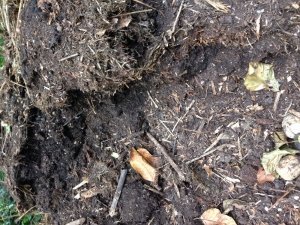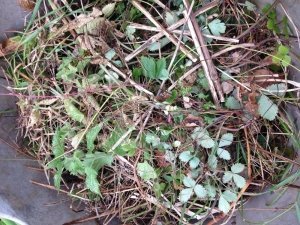Looking after the soil on your plot is fundamental to grow good crops and produce the best seeds for saving.
As this season becomes fully autumnal, it is a great time to use existing compost or to prepare to make some in the future.
Home made compost is a good soil conditioner for whatever soil you have; from light sand, silt, stony Cotswold Marl, or heavy clay. Either spread a good layer over the soil, or fork in.
Use waste plant material from the plot, like turf, annual weeds, mown grass, or the growth from harvested crops, like peas, beans, sweetcorn, courgettes, pumpkins, or trimmings from leafy vegetables. Stinging nettles and comfrey leaves can also be added.
Fresh green and dried materials are all mixed in; roughly cut into smaller pieces will speed up the composting process.
Keep the compost moist; if it looks dry remove any covering during wet weather and replace the cover when rehydrated. Turning the heap does hasten the compost process. Any ingredients that have not composted down completely can be used to start a new heap.
 Only compost disease-free tomato plants and potato haulms, and omit any other plant that has suffered from some sort of blight.
Only compost disease-free tomato plants and potato haulms, and omit any other plant that has suffered from some sort of blight.
The weeds to avoid adding are bindweed, large amounts of couch grass roots, ground elder and mare’s tail.
Compost containers keep the heap neat and come in all shapes and materials. If vermin are a problem use fine mesh chicken wire underneath and around the base in one continuous piece.
Sally Oates

